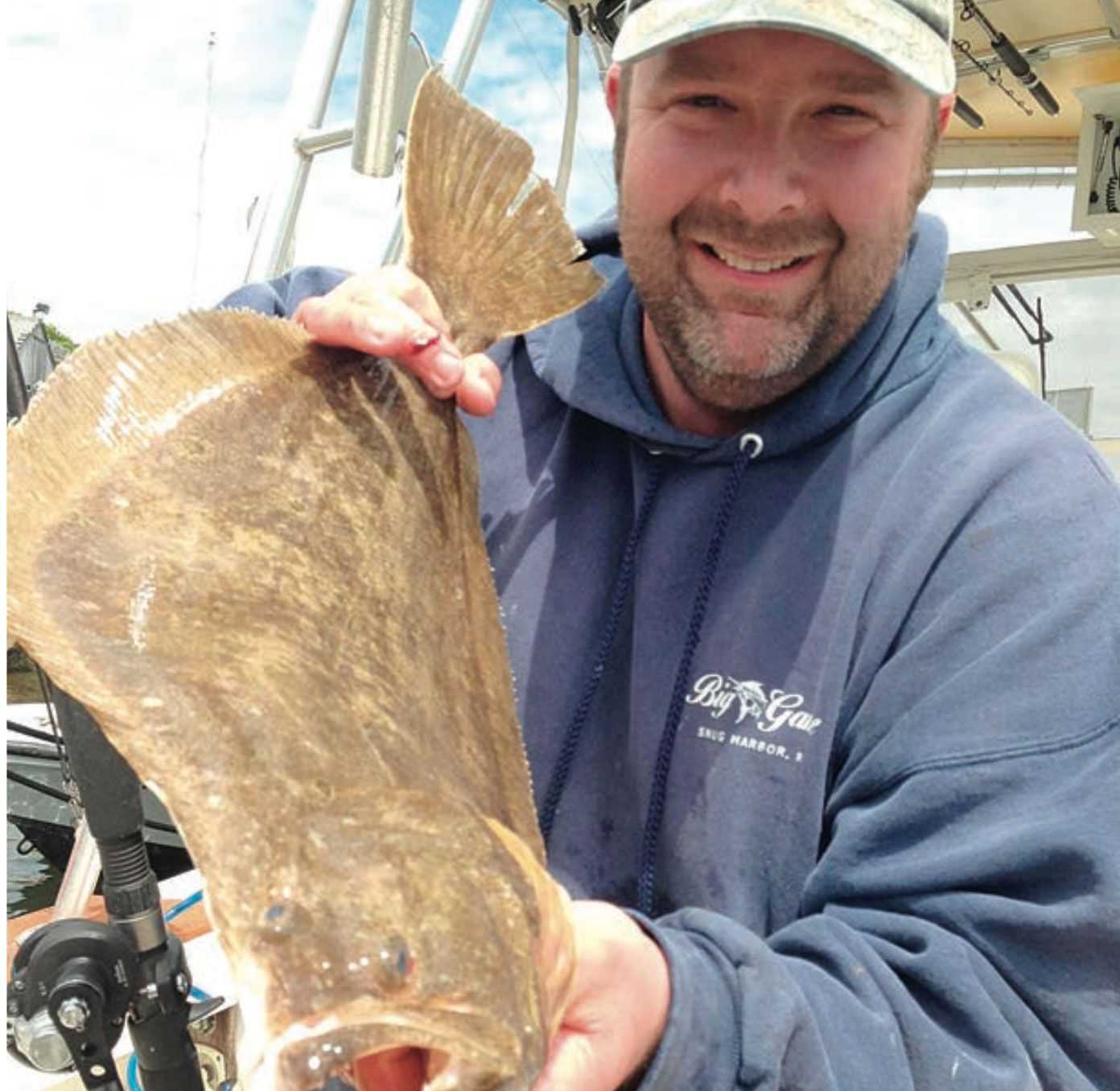
June is the month when fluke season really begins on Long Island. After the crazy cold winter, we are happy to be bringing in some nice ones!
June is the month when fluke season really begins on Long Island. After the crazy cold winter, we are happy Gto be bringing in some nice ones!
Growing up on Shelter Island, we caught a fair amount of Fluke in Peconic Bay in the summer. While it looked really weird, it sure tasted great. Not strong like the bluefish and swordfish that seemed to grace the family table once a week!
Fluke–along with flounder, sole, turbot and halibut–are all flatfish; they not only appear truly flat, rather than the rounder full-bellied fish, but they also have two eyes on one side of the head. Fluke are often confused with flounder, but there are real differences. The most obvious is that the flukes’ eyes are on the left side of the head and they have larger mouths with more prominent teeth than flounder. And to really confuse the issue, fluke are often called “summer flounder” whereas “winter flounder,” such as dab, sole and lemon sole, have both eyes on the right side…but the real difference is in the taste.
Generally, fluke are larger than flounder, which makes their meat, when cooked, more firm and meaty than the more delicate texture and taste of the smaller flounder. Very big fluke are sometimes called “doormats” because of their size and shape. These “mats” are similar to Atlantic halibut, often served as a “beefy” steak, whereas the smaller fluke can be a bit more like flounder and sole in taste, often prepared simply with lemon, butter or wine. Larger fluke holds up better to grilling than the flakier flounder, but smaller fluke are just as delicious lightly breaded and pan-fried with a traditional meuniere or amandine sauce.
In the fall, fluke head out to off-shore waters and the sole and dab come inland, which is why they are sometimes called “winter flounder.” But winter flounder are not predators the way summer flounder are. Fluke are bottom-dwellers, changing the color patterns of their skin, chameleon- like, to blend in with their surroundings. They can hide for hours buried at the sandy and muddy bottoms of harbors, bays and along the open coast, with only their heads exposed, ready to pounce on their prey…so bring lots of hooks and sinkers when fishing for fluke! Aggressive predators, they feed on shrimp, mollusks and other crustaceans, as well as smaller fish, swimming short distances at high speeds, even sometimes jumping to the surface to chase their prey, unlike the docile winter flounder that remain mostly buried, almost stationary, biting off clam siphons that protrude from the sand.
Our Coastal Angler Magazine Rhode Island editor Zach Harvey, aka Master of the Fish-geist, advises using strips of squid as the best bait to land the keepers–the big fluke. He spends a lot of time thinking about the how, where and when of landing these tasty doormats. Check out his regular stories for a deep dive into the techniques and secrets of successful fluking.
For a beautiful and delicious preparation, try this tasty summer Recipe:









